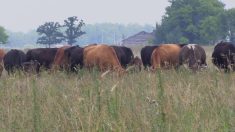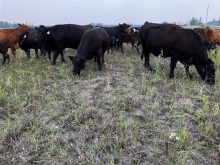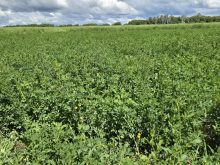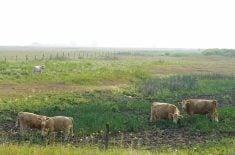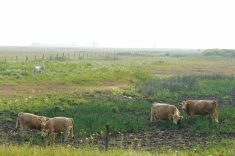Manitoba’s beef producers say that AgriRecovery changes announced in the last week of March strike a number of items from their drought aid wishlist.
“We’re really pleased with the changes that (government has) made,” Manitoba Beef Producers president Tyler Fulton said. “They’ve been responsive. We’ve kind of been in communications with them constantly over the course of the last eight months or so and, while it’s kind of late, it’s still a very welcome change that targets the individuals that were most impacted.”
Why it matters: The province and federal government earmarked $155 million in AgriRecovery funds, split between a suit of three programs, last year, in the wake of the worst drought in recent memory.
Read Also
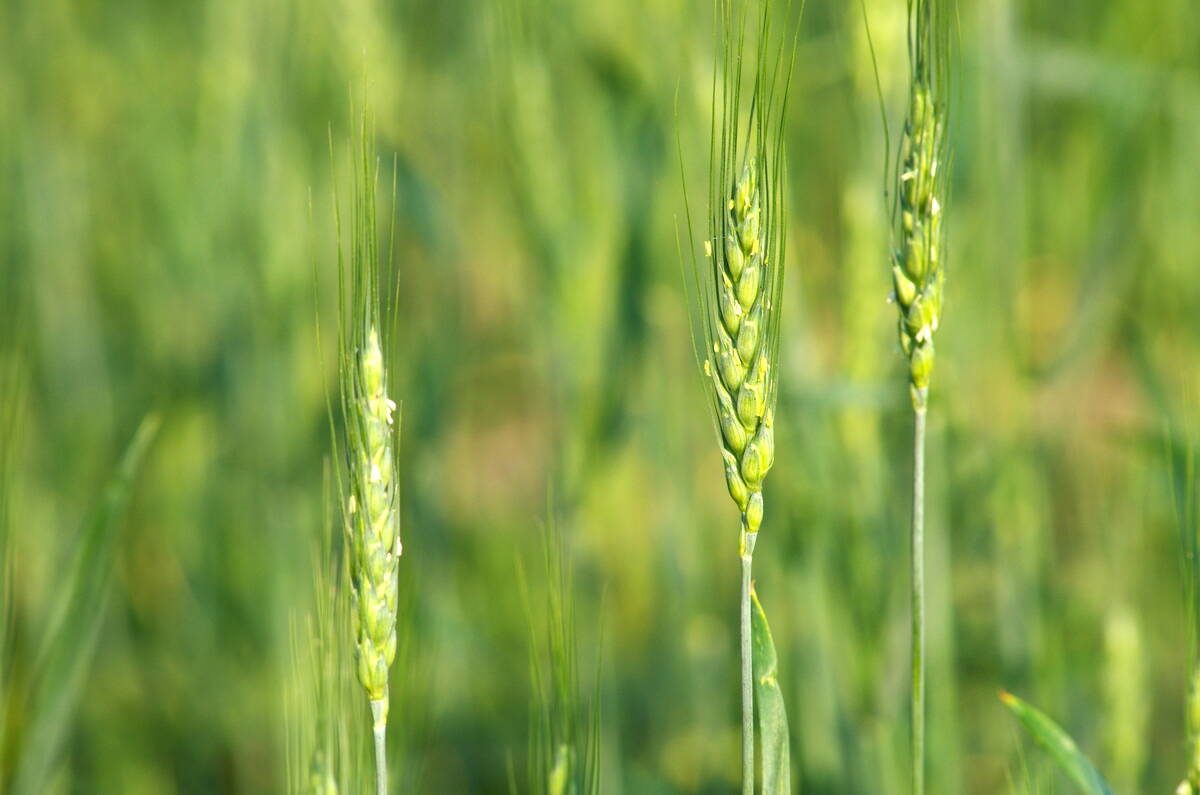
Code cracked on nitrogen-fixing wheat?
U.S. crop breeders have created a wheat variety capable of fixing its own nitrogen rather than relying on fertilizer.
On March 30, the province and federal government announced that they were doing away with the “producer share” from payments under the feed and transportation aid program.
The program compensates producers for purchased feed, land rentals to access feed, hauling water, extra fencing and extra forage acres harvested, among other expenses, to maintain breeding stock amid the 2021 drought and over the winter. The previous form of the program required producers to pitch in $50 per head for cattle, bison, elk and PMU horses and $10 a head for sheep and goats as part of the payment calculation.
Cross-sections of the livestock sector had previously argued that the per head payment put aid out of reach of some of the worst hit producers, who were experiencing serious cash flow issues.
Producers can also, however, expect a decrease in coverage for “extraordinary expenses.”
Earlier this year, the two tiers of government added “extraordinary expenses” to the program, which allowed, for the first time, producers to claim costs like water hauling or opening up new areas for hay harvest or grazing. The same round of changed added elk to the list of eligible breeding stock.
The program initially promised that 75 per cent of those expenses would be eligible for reimbursment. The March 30 announcement drops that coverage to 70 per cent.
Government argues that the move would actually “increase funding to all applicants” when taken in combination with the removal of the “producer share.”
The same announcement also raises the bar on the maximum payment a producer can seek per animal. Large livestock (cattle, bison, elk and horses) can see $20 more per head (from $250 to $270), while sheep and goats will see a $4-per-head jump (from $50 to $54).
The program also has a new deadline. Producers now have until May 13 to submit applications, although the window for accruing eligible expenses remains at June 1, 2021 to April 15, 2022.
The government credited Manitoba’s harsh weather for the extension.
Long stretches of extreme cold and heavy snow forced producers to feed more than expected this winter, the March 30 statement read.
With the changes, some producers who have already seen their payout may be eligible for another, “dependent on their claims,” according to a representative from Manitoba Agriculture Minister Derek Johnson’s office.
“It’s hoped that these program changes will motivate some producers to submit applications for funding if they have been hesitant to do so in the past,” they said.
Producers do not need to re-apply, according to the province.
“Which is really good,” Fulton said. “That’s always a barrier in programs such as this. It’s difficult to get producers to take the time to do it. It is time consuming, especially at a busy time of the year.”
“We think that there are a large number of producers who will just automatically qualify and receive that extra support,” he added
In total, the province has logged over $34.31 million paid out over 2,691 AgriRecovery claims as of the end of March. Of that, feed assistance counts for $31.98 million, feed transport for more than $2.3 million, and livestock transportation (under another program, centred around transporting livestock to feed rather feed to livestock) for $23,800.
“The department of agriculture anticipates a large growth in the number of assistance applications during the coming weeks as producers assess their bills and work on their income tax returns,” the representative said. “The extension of the application deadline is also expected to lead to a significant influx of claims.”




